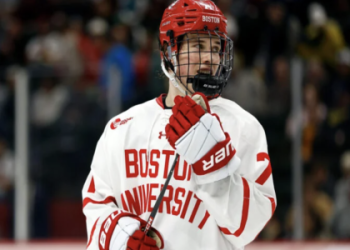The landscape of high school basketball in 2002 was vibrant and filled with promise. As the recruiting season heated up, several young talents emerged as elite prospects, capturing the attention of college coaches across the nation. For many fans and analysts, this crop of players hinted at the future stars of the NBA. With the high school basketball scene becoming increasingly competitive, ranking these prospects required not only performance analysis but also a deep understanding of their potential impact on the game.
Among the standout players of that year was LeBron James, a name that resonated not just in high school circles but from coast to coast. Hailing from St. Vincent-St. Mary High School in Akron, Ohio, LeBron displayed a rare combination of athleticism, skill, and basketball IQ. His game was characterized by explosive dunks and an ability to read defenses that belied his age. Scouts marveled at his versatility, noting, “He can play any position on the court,” a sentiment echoed by many who watched him dominate the competition.
Moreover, Kenny George made headlines for his imposing physical presence. Standing at 7’7″, he was a shot-blocking machine for the University of North Carolina at Wilmington. While his size gave him a considerable advantage, his footwork and endurance were frequently questioned. Charlie Williams, a former coach, praised George, stating, “If he can improve his conditioning, he could be a game-changer at the collegiate level.” However, the challenge of staying nimble became a focal point for analysts.
The Dynamic Duo
Another duo worth noting was Josh Smith from Seattle and Marcos Belinelli from California. Both players brought distinct styles that would later serve them well in their careers. Smith was known for his scoring ability, frequently showcasing his arsenal of jump shots and drives to the basket. Meanwhile, Belinelli’s play ranged from high-percentage shooting to crafty ball handling, earning him a reputation as a versatile guard. “I just love to compete,” Smith once noted, highlighting his relentless approach to each game.
Also, we cannot forget Chris Paul, a point guard who played for West Forsyth High School in North Carolina. His court vision and leadership set him apart from his peers. Coaches praised him, saying, “Chris controls the tempo like a seasoned veteran.” His ability to facilitate teamwork and create scoring opportunities made him a natural leader, even in high school.
Understanding the Rankings
Evaluating these high school stars was not solely based on talent. Historical performances played a significant role too. Many scouts considered how these players contributed to their teams and their resilience under pressure. High school championships often weighed heavily in their assessments. For instance, LeBron’s consistent championship runs added to his legendary status early in his career. Additionally, environmental factors, such as coaching staff and competition level, provided layers to their evaluations. Players who excelled in strong conference settings often received higher rankings due to tougher competition.
Amid their meteoric rise, the athletes often faced immense pressure. When asked about dealing with expectations, LeBron remarked, “I just focus on playing my game and not letting distractions pull me away.” This perspective helped him maintain his sanity, despite being a household name well before his NBA debut.
As 2002 came to a close, the sports community buzzed with discussions of these prospects. Fans eagerly anticipated their transitions to college basketball, where they aimed to further hone their skills. With so much talent emerging, the basketball world seemed poised for a significant shift in the coming years.
As readers reflect on this powerful class of prospects, it’s intriguing to consider the ripple effects they’ve had on the sport. How did these young athletes shape college basketball as we know it? Furthermore, who do you think will emerge as the next high school star that can compete at the NBA level? Share your thoughts below!















